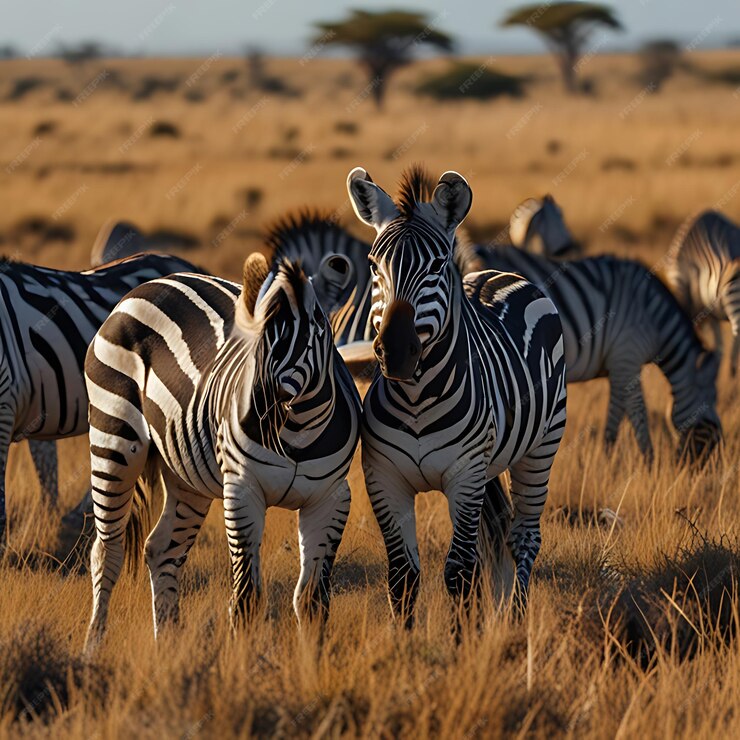Kenya Wildlife: A Haven for Safari Lovers and Conservationists
Kenya is world-renowned for its incredible wildlife and breathtaking natural landscapes. With diverse ecosystems ranging from savannas to forests and coastlines, Kenya offers an unmatched experience for wildlife enthusiasts. Whether you’re looking to see the Big Five, witness the Great Migration, or explore lesser-known reserves, Kenya has something for every nature lover.
1. The Big Five: Icons of Kenya’s Wildlife
Kenya is home to the famous Big Five: lions, leopards, elephants, buffalo, and rhinos. These animals earned their name as the most dangerous game to hunt, but today, they are sought after by photographers and wildlife lovers alike.
- Lions: Often referred to as the “king of the jungle,” lions are a major attraction. The Maasai Mara is especially known for its large lion prides.
- Elephants: Amboseli National Park is one of the best places to see Kenya’s majestic elephants up close. The park offers incredible views of herds of elephants with the stunning backdrop of Mount Kilimanjaro.
- Leopards: Elusive and solitary, leopards can be found in many of Kenya’s national parks, though they are often hardest to spot. Samburu and Nakuru National Parks are known for sightings.
- Buffalo: Cape buffalo are abundant in Kenya’s parks and are known for their power and unpredictable nature. They move in large herds and are often seen near water bodies.
- Rhinos: Black and white rhinos are protected in parks like Nairobi National Park, Ol Pejeta Conservancy, and Lewa Wildlife Conservancy. Conservation efforts have helped stabilize populations, but they remain critically endangered due to poaching.
2. The Great Migration: Nature’s Greatest Spectacle
One of the most awe-inspiring wildlife events on the planet is the annual Great Migration, where millions of wildebeest, zebras, and gazelles cross the Mara River between Tanzania’s Serengeti and Kenya’s Maasai Mara. This natural phenomenon attracts predators such as lions, crocodiles, and hyenas, creating an incredible display of nature’s raw power.
The migration occurs from July to October in the Maasai Mara and is one of the most sought-after safari experiences in the world. It’s often referred to as the “World Cup of Wildlife” due to the massive scale and dramatic scenes that unfold as the animals battle predators and treacherous waters.
3. Birdwatching in Kenya: A Paradise for Ornithologists
Kenya is also a haven for bird lovers, with over 1,100 species of birds found in the country. The varied landscapes, from lakes and mountains to grasslands and coastal wetlands, provide habitats for a diverse range of birdlife.
- Lake Nakuru is famous for its flocks of pink flamingos, which gather in the shallow waters to feed on algae. While the flamingo population fluctuates, the sight of thousands of them turning the lake pink is breathtaking.
- Samburu and Buffalo Springs are great places to spot unique bird species like the Somali ostrich and vulturine guineafowl.
- Tsavo National Park is home to birds of prey such as martial eagles, as well as smaller species like bee-eaters and kingfishers.
4. Lesser-Known Wildlife Reserves: Hidden Gems of Kenya
While the Maasai Mara and Amboseli are globally famous, Kenya has several lesser-known parks and conservancies that offer incredible wildlife experiences with fewer crowds.
- Meru National Park: Known as one of Kenya’s wildest and most untouched parks, Meru is home to a wide variety of wildlife including lions, cheetahs, elephants, and the rare Grevy’s zebra. It’s also famous for being the setting of Joy Adamson’s book, Born Free.
- Laikipia Plateau: This region offers stunning landscapes and is home to wildlife such as elephants, lions, and wild dogs. The Laikipia conservancies, like Ol Pejeta and Lewa, are at the forefront of wildlife conservation, particularly for endangered species like black rhinos.
- Shimba Hills: Near the Kenyan coast, Shimba Hills is a beautiful forested reserve known for its population of sable antelopes and stunning waterfalls. It offers a peaceful escape with fewer tourists compared to other parks.
5. Conservation Efforts: Protecting Kenya’s Wildlife
Kenya has a long history of wildlife conservation, with many organizations working to protect endangered species and their habitats. Some key conservation efforts include:
- Anti-poaching initiatives: Poaching remains a major threat, particularly to rhinos and elephants. Kenyan authorities have strengthened anti-poaching laws, and conservancies like Ol Pejeta and Lewa have armed rangers and technology such as drones to monitor wildlife.
- Community-based conservation: Many of Kenya’s wildlife areas are managed in partnership with local communities. These initiatives ensure that local people benefit from wildlife tourism, encouraging them to participate in conservation efforts.
- Wildlife corridors: As human development expands, wildlife corridors are being established to ensure that animals can move between habitats. For example, the corridor between Amboseli and Tsavo helps maintain the movement of elephants.
- The David Sheldrick Wildlife Trust: This renowned elephant orphanage in Nairobi rescues and rehabilitates baby elephants that have been orphaned, usually due to poaching. Once they are ready, the elephants are reintroduced into the wild.
6. Marine Wildlife: Kenya’s Coastal Treasures
Beyond its savannas and forests, Kenya’s coastline is home to a vibrant marine ecosystem. The Watamu Marine National Park and Malindi Marine Park are famous for their coral reefs, sea turtles, dolphins, and even whale sharks. Snorkeling and diving in these parks offer a chance to explore the underwater world and observe species like the green sea turtle and various tropical fish.
- Lamu Island offers a unique wildlife experience, where the ancient Swahili culture blends with the wildlife-rich coastal mangroves. Dolphins and dugongs can sometimes be seen off the shores of this historical island.
7. Safari Tips: How to Make the Most of Your Kenya Wildlife Experience
- Best Time to Visit: The dry season from June to October is the best time for wildlife viewing, as animals gather around water sources and the vegetation is thinner, making it easier to spot them.
- Responsible Tourism: Choose eco-friendly lodges and tour operators that respect wildlife and the environment. Avoid disturbing animals, and always follow the guidelines set by park authorities.
- Packing Essentials: Bring lightweight, neutral-colored clothing, binoculars, sunscreen, a camera with a good zoom lens, and plenty of water for your safari adventures.
- Stay in Conservancies: Opting to stay in private conservancies rather than national parks often provides a more intimate wildlife experience, as these areas tend to have fewer visitors and offer night drives and guided walks.
Conclusion
Kenya’s wildlife is one of the world’s greatest treasures, offering experiences that are both thrilling and humbling. From the iconic Big Five to the rich birdlife and marine ecosystems, the country is a paradise for wildlife lovers. With continued conservation efforts and responsible tourism, Kenya’s wildlife will continue to thrive for future generations to enjoy. Whether you’re planning your first safari or returning for another adventure, Kenya’s incredible biodiversity ensures there’s always something new to discover.








